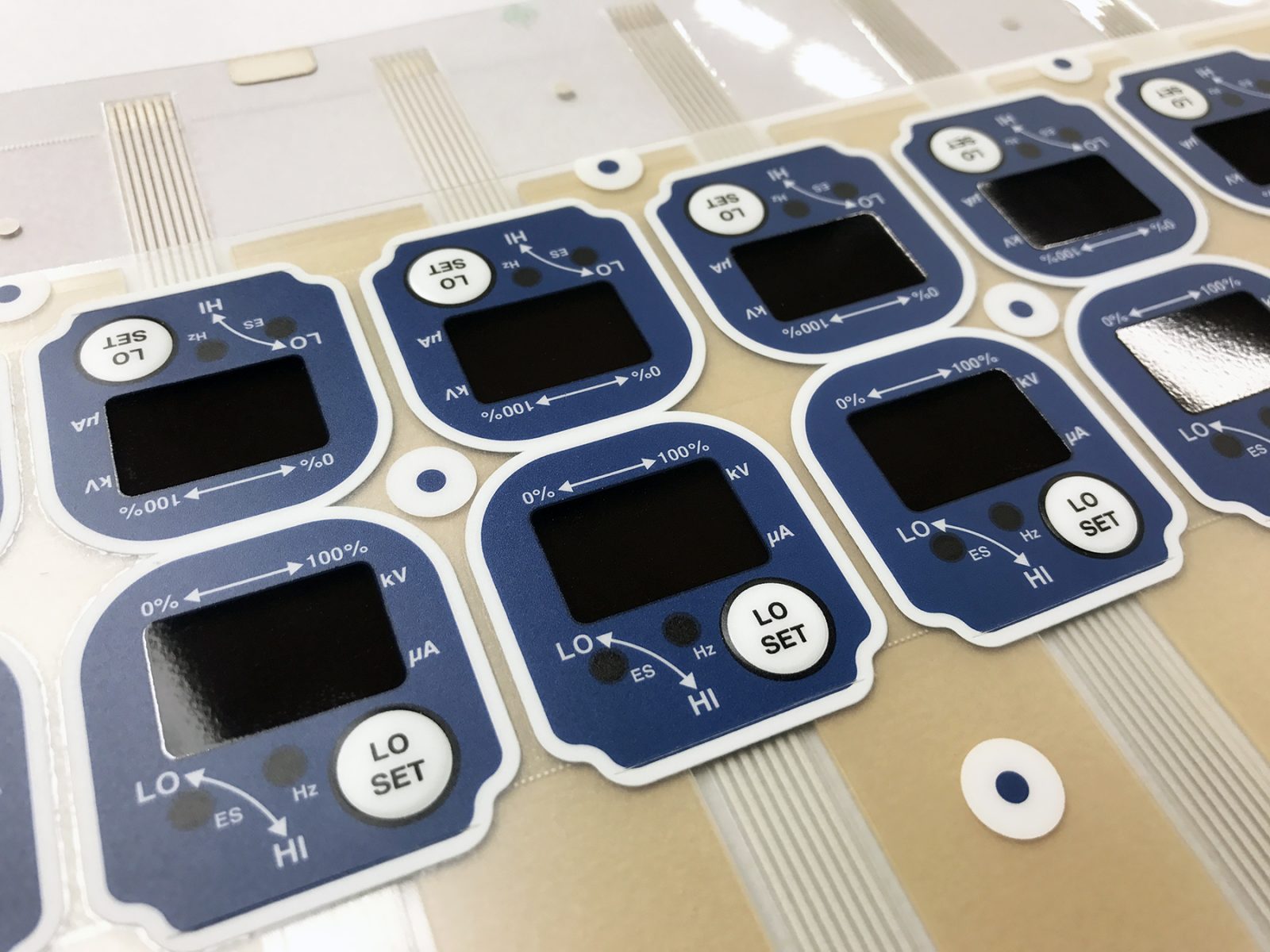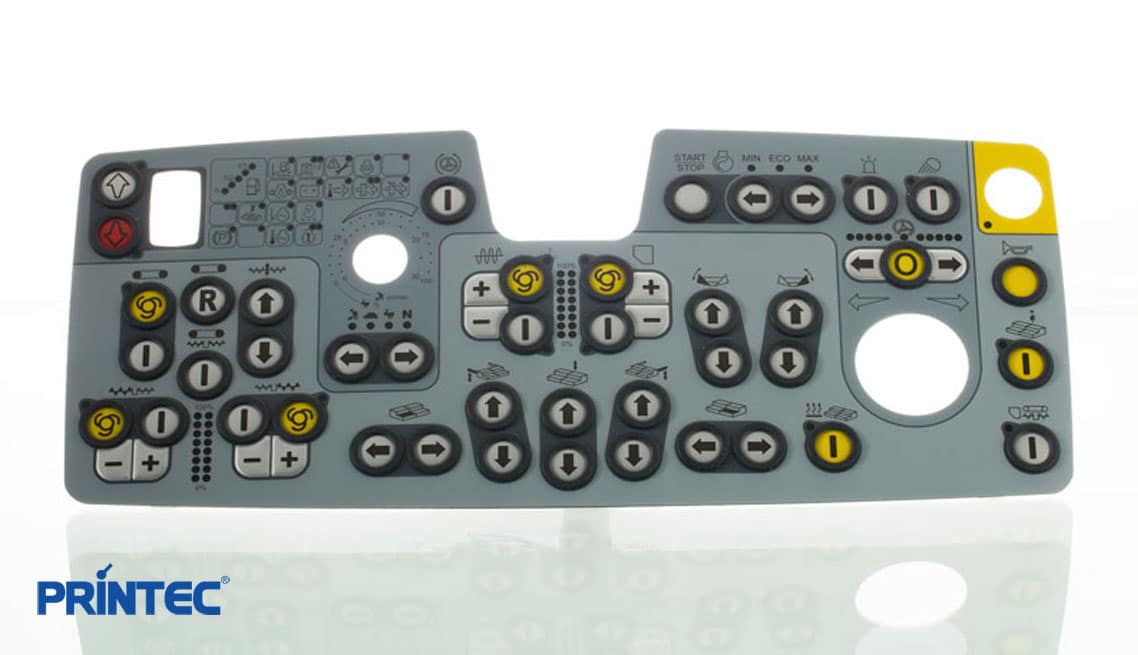All About Membrane Change: Understanding Its Style and Capability
When you think of the control user interfaces in modern devices, membrane layer switches often come to mind. These parts are greater than simply switches; they mix design and functionality effortlessly. Comprehending exactly how they work and what makes them reliable can alter your perspective on everyday electronics. There are nuances to their layout and efficiency that you could not be aware of. Allow's explore what collections membrane layer changes aside from various other control systems.
What Are Membrane Layer Switches?

Membrane layer buttons can additionally be personalized concerning shape, size, and graphics, permitting producers to produce special interfaces tailored to specific items. On the whole, membrane layer buttons play a considerable duty in improving customer experience across a broad variety of applications.
Exactly How Membrane Switches Over Job
When you push a key on a membrane layer button, it activates an uncomplicated yet effective mechanism. membrane switch manufacturer. The leading layer, commonly made of flexible material, pushes down onto a conductive layer below it.
You'll discover that the responsive comments varies based on the switch layout, using either a soft click or a more noticable action. As soon as you release the trick, the membrane go back to its initial position, reopening the circuit and quiting the signal. This process takes place almost instantly, making sure a receptive individual experience.
Membrane layer switches are prominent because of their resilience and resistance to dust and dampness, making them ideal for numerous applications, from house home appliances to medical devices. Comprehending this operation aids you appreciate their widespread use.
Key Components of Membrane Layer Buttons
Understanding the key elements of membrane buttons is essential for grasping their functionality and layout. The protective layer guards versus environmental factors and wear, expanding the button's life-span. By recognizing these parts, you'll obtain understanding right into just how membrane switches run and their significance in numerous applications.
Products Used in Membrane Change Design
The efficiency and resilience of membrane changes greatly depend upon the products utilized in their style. You commonly experience polyester and polycarbonate as main substratums as a result of their superb strength and flexibility. These materials resist scrapes and chemicals, making them ideal for demanding environments.
The conductive layers frequently use silver or carbon, selected for their dependability and conductivity. membrane switch manufacturer. Silver gives premium performance, while carbon is a cost-effective choice. For the overlay, you may take into consideration a matte or shiny coating, depending on your aesthetic demands and individual experience
Make certain to choose adhesives that endure environmental elements like temperature and humidity. Choosing the ideal materials will assure your membrane button stands the examination of time.
Layout Factors To Consider for Membrane Layer Switches
While making membrane buttons, it's essential to take into account different factors that affect their functionality and customer experience. Beginning by focusing on the design and button dimension; make specific they're user-friendly and simple to navigate.
Validate your layout accommodates environmental aspects, like wetness or temperature level variants, which can impact efficiency. By very carefully thinking about these aspects, you'll produce a membrane button that boosts usability and fulfillment.
Applications of Membrane Layer Buttons
Membrane layer switches are functional components found in numerous applications, from commercial devices to customer electronics. You'll see their impact in equipments that call for sturdy user interfaces and in gadgets that profit from streamlined designs. Comprehending these applications helps you value the performance and practicality of membrane layer switches in daily technology.
Industrial Tools Usage
When you're seeking to boost the functionality of commercial equipment, membrane layer buttons offer a reputable option that integrates sturdiness with straightforward design. These buttons are ideal for severe environments, giving resistance to dirt, moisture, and chemicals. You'll discover them in control panels for manufacturing equipments, cooling and heating systems, and clinical tools, where accuracy and responsiveness are vital. Their low account means they fit effortlessly right into various devices, saving beneficial room while maintaining ease of use. With personalized graphics and backlighting options, you can create an user-friendly interface for operators, boosting efficiency and safety and security. Plus, their lengthy life-span decreases maintenance costs, making them a clever investment for your commercial applications. Accept membrane layer switches to improve your procedures and boost overall efficiency.
Customer Electronics Integration
In the domain of consumer electronics, this link membrane switches play an important duty in enhancing individual communication and device capability. Membrane buttons also guarantee longevity and resistance to dust and dampness, extending the lifespan of your electronic devices. By choosing membrane layer buttons, you boost not simply the capability yet likewise the design of your gadgets, making everyday communications smooth and delightful.
Benefits and Downsides of Membrane Layer Switches
While membrane layer switches supply an array of advantages, they also include some drawbacks that you must take into consideration. One substantial advantage is their compact style, making them perfect for space-constrained applications. They're additionally cost-effective, supplying a resilient option with a low manufacturing expense. On top of that, their my response smooth surface area is easy to tidy, enhancing health in environments like health centers.

Membrane layer buttons can have a much shorter life-span contrasted to mechanical buttons, specifically under hefty use. They can additionally be less responsive, which might influence customer comments throughout procedure. Balancing these pros and cons will assist you figure out if membrane layer buttons are the ideal fit for your project.
Often Asked Inquiries
How Much Time Do Membrane Switches Generally Last?
Membrane layer switches commonly last in between 5 to ten years, relying on usage and ecological conditions. You'll wish to assess factors like wear, direct exposure to moisture, and temperature level fluctuations to determine their long life efficiently.
Can Membrane Layer Changes Be Customized for Specific Designs?
Yes, find you can personalize membrane layer switches to fit details styles (membrane switch manufacturer). You'll have the liberty to choose colors, forms, and formats that match your project's requirements, guaranteeing they blend flawlessly with your total aesthetic
What Is the Price Variety for Membrane Layer Change Production?
The expense array for membrane switch production typically drops between $1 and $10 per device, depending upon aspects like style intricacy, quantity, and products. You can get quotes from makers to find the most effective alternative.

Are Membrane Changes Water-proof or Resistant?
Membrane switches can be created to be waterproof or immune, relying on products made use of and building methods. If you need them for wet environments, guarantee you specify those requirements throughout the style procedure.
Just How Do Membrane Switches Over Compare to Standard Switches?
Membrane switches are normally thinner and much more versatile than typical switches, supplying a sleek design. They're commonly much easier to cleanse and incorporate, but may not provide the responsive responses you're used to with mechanical choices.
Verdict
